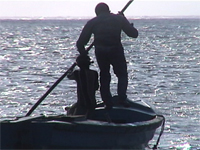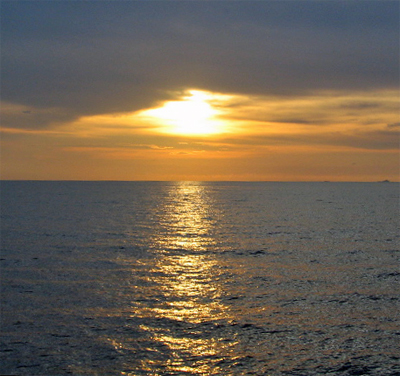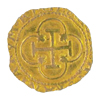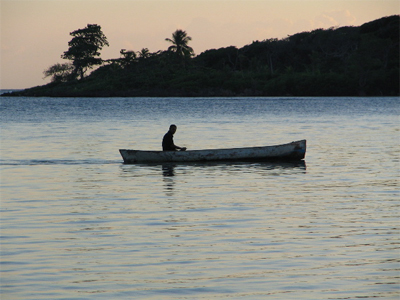|
|
|
|
They enslaved native Indians and brought slaves from
Africa to work in the mines. The Spaniards established cattle ranches to provide
food for the miners. There were a number of Spanish ships moving through the Bay of Honduras and there were Spanish settlements on Roatan. Pirates attacked the ships and raided the settlements. Van Horne, a Dutchman, raided Spanish-Indian settlements in 1639. English and French pirates also terrorized the area. In 1642, English raiders from modern day Belize had occupied old Port Royal in Roatan, which is a little to the east of modern Port Royal. A number of white descendants with English names and heritage live on the island today.
|
|
| In 1742, the English once again settled on Roatan. Major Caulfield was in control of the island. His letter to Mr. Trelawry, Governor of Jamaica, documents Spanish attempts to regain Roatan. The English settlements that were drawn by the Geographer to His Majesty, Thomas Jeffreys, included settlements that still bear the same names today. Calkett’s Hole was shown, but it is now called Coxen Hole. Coxen Hole is the largest village on Roatan. Falmouth Harbout is now called Oak Ridge. The English lost Roatan in March of 1782. The Spanish
positioned troops and cannons against the forts and defeated the
English. The Spanish destroyed about 500 homes. The English left
the island completely in 1788. In 1797, the English forced
about 5000 Black Caribs from the Windward Island of St. Vincent,
moving them from island to island, finally leaving them on Roatan.
Black Caribs are a mixture of people of African descent and Carib
and Arawak Indians. |
|
| The Jackson family, a wealthy and influential family on Roatan today, came from the southern United States in the 1800's, descending from confederate soldier who refused to surrender to the Union. A southern accent is still discernable in their speech. Approximately 200 white people lived in “Coxen’s old kay” in 1840. Ten years later, the population of the island had risen to five or six thousand people. In 1852, the British leadership appealed to Her Majesty, Queen Victoria to establish Roatan along with other islands to become a British colony. The United States objected, citing a treaty signed to create the Panama canal that forbad the United States and Britain from establishing new colonies in the Western Hemisphere. In 1859, England relinquished control of the Bay Islands. The Republic of Honduras accepted the Bay Islands as the “Departemente de las Islas de la Bahia”, officially making the islands a part of Honduras. For many years after coming under Honduran rule, islanders of English descent continued to claim English citizenship, although those born in Honduras after 1861 are legally Hondurans. Although Spanish is the national language and is spoken on Roatan, the English language also lives on Roatan. Roatan is a colorful mixture of people, languages, and culture. Today, tourism is the primary industry on Roatan. Cruise ships and planes bring thousands of tourists each year. Roatan is known around the world for its scuba diving. |
|
Legends
continue of ghosts of the past. Ghosts, or "duppees",
reportedly have been sighted by various locals. They tell that
men burying gold would kill a man, leaving his body with the gold to
"watch" the gold. After centuries, the ghost is reportedly
tired of watching, and will give someone specific directions on how
to find the gold. If those instructions are followed exactly,
the seeker reportedly can find the gold. One local tells of a
ghost blowing in his ear when he was in a remote area of the wilderness
hunting crabs late at night. Roatan's history is rich, spanning from the days of Indian inhabitants, to the days of piracy and looting, to fighting over which nation owns the island, to independence and modern times.  |
 |
| Do
you have Roatan historical information to add? Contact
the Webmaster |
|
| brought to you by SELLthisHOUSE.com all rights reserved |
|

 Roatan
is an island in the Caribbean Sea. It is a part of Honduras, lying
about 50 miles from the northern coast of the Honduran mainland. Roatan
has a colorful history that weaves in stories of Indians, invaders,
pirates, buried gold, and a blend of races and languages.
Roatan
is an island in the Caribbean Sea. It is a part of Honduras, lying
about 50 miles from the northern coast of the Honduran mainland. Roatan
has a colorful history that weaves in stories of Indians, invaders,
pirates, buried gold, and a blend of races and languages. When Columbus
discovered a neighboring island named Guanaja in 1502, the islands
were already populated. Artifacts and caves left by these early inhabitants
remain today. Other Spanish explorers came after Columbus. The
Spaniards began mining both gold and silver on the mainland of Honduras.
When Columbus
discovered a neighboring island named Guanaja in 1502, the islands
were already populated. Artifacts and caves left by these early inhabitants
remain today. Other Spanish explorers came after Columbus. The
Spaniards began mining both gold and silver on the mainland of Honduras. 

 The Spanish, desiring to rid the area of pirates so
they could transport the New World gold to Spain in peace, attacked
Port Royal with four war ships under the command of Francisco Villalva
Toledo in 1650. The pirates successfully defended Port Royal,
Roatan, forcing the Spaniards to return to the mainland for reinforcement.
With the pirates greatly outnumbered and with fierce fighting, the
pirates were conquered. The Spaniards gathered the remaining Indians
on the island and moved them to Guatemala.
The Spanish, desiring to rid the area of pirates so
they could transport the New World gold to Spain in peace, attacked
Port Royal with four war ships under the command of Francisco Villalva
Toledo in 1650. The pirates successfully defended Port Royal,
Roatan, forcing the Spaniards to return to the mainland for reinforcement.
With the pirates greatly outnumbered and with fierce fighting, the
pirates were conquered. The Spaniards gathered the remaining Indians
on the island and moved them to Guatemala.